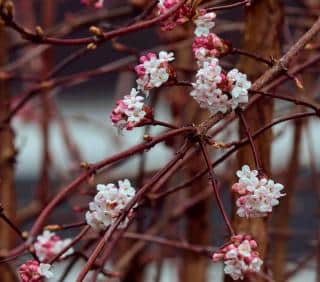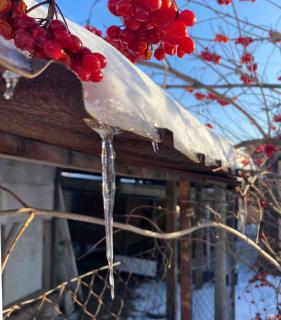

Winter viburnum species bloom from November to March. Blooming only occurs
on specimens at least 4 to 6 years old. It wafts a very surprising fragrance, with hints of flowers, spices, honey and vanilla.
Set your winter viburnum up preferably to the North, so that the flower-bearing shoots are protected from the morning sun. Indeed, it could make the buds burst after a night of freezing. Best is to plant deciduous varieties during the dormant state (October to March), preferably choosing plants that aren’t too small (24 to 32 inches (60 to 80 cm) tall). Planting distance: about 6 ½ feet (2 meters) whatever the species.

Growth is quite slow, about 4 to 6 inches (10 to 15 cm) a year. Winter viburnum grows approximately up to 6 ½ feet (2 meters) high and wide when it reaches 10 years of age. If you can, select specimens sold in containers, they have already developed an entire root system. Stress from planting won’t be as critical.
Let the shrubs grow for 4 to 5 years after planting, without pruning. After that, prune your adult winter viburnum after the blooming, cutting the shoots that have born flowers back by 2/3ds and balancing the shrub branches out. This keeps the plant from losing branches at the base and encourages the plant to grow more flowers. It is also important to remove dead wood at the end of summer, and to clear the center of the shrub in spring. For specimens that are too bushy, cut back to the ground about one third of the branches that have bloomed every year.

Plant clematis or sweet pea at the foot of your viburnum, snowball bush. This pairing will beautifully highlight your viburnum, without hindering it in the least.
M.-C. D.